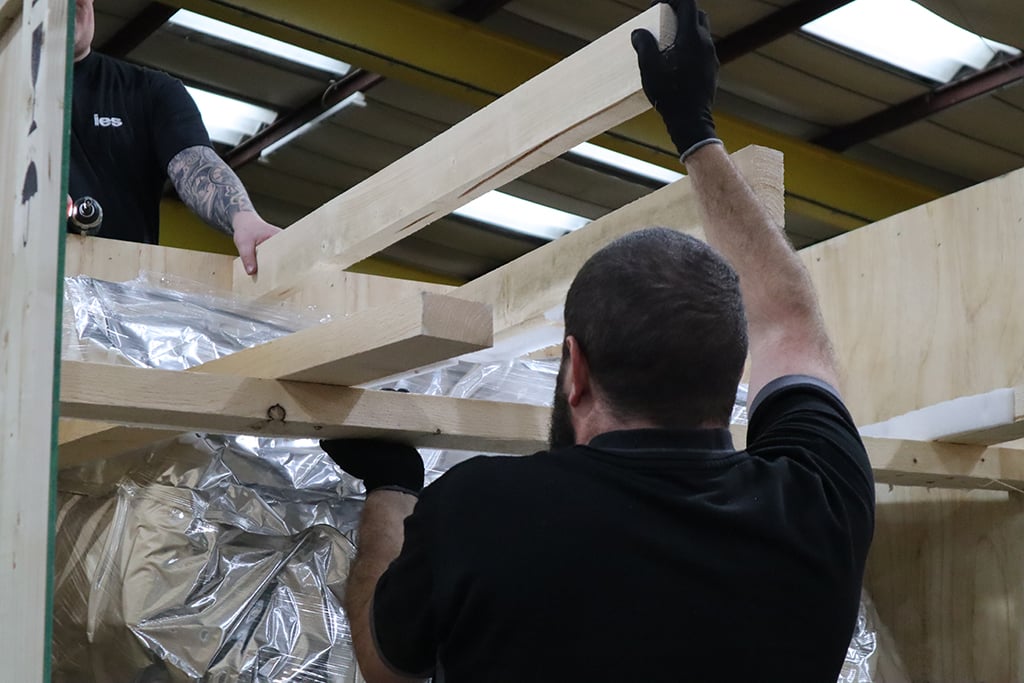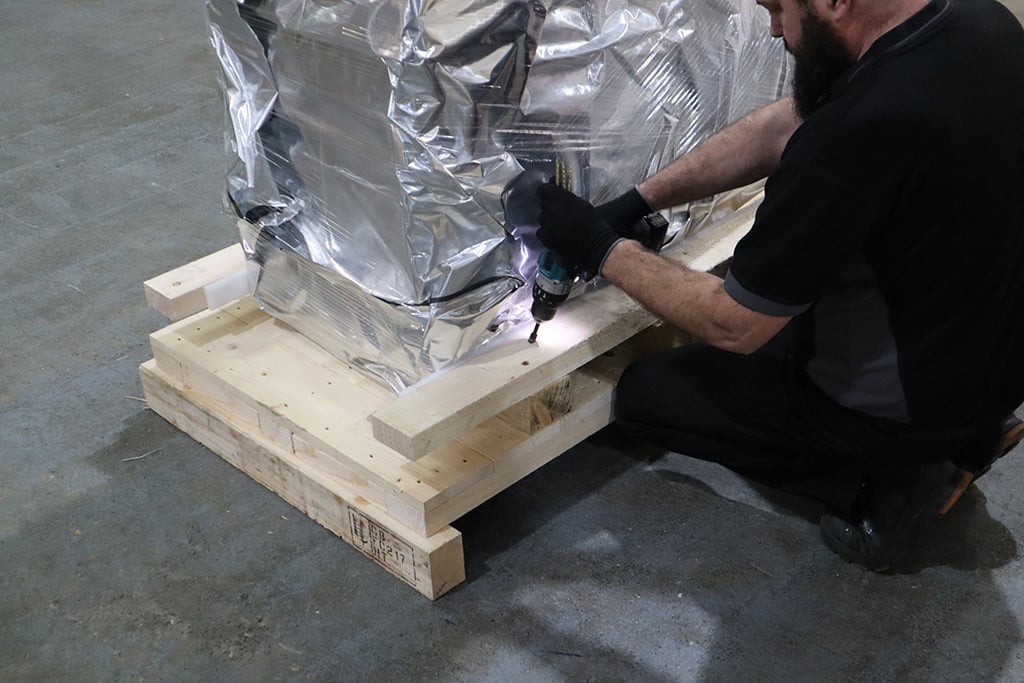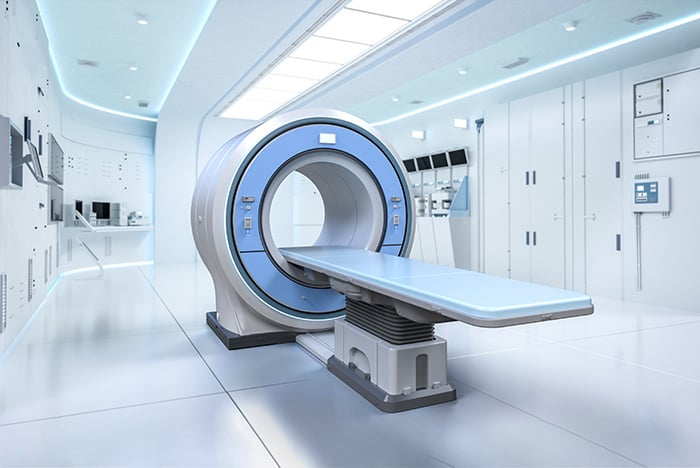4 Expert Tips for Export Packing Semiconductor Equipment
We’ve worked with complex, business-critical semiconductor equipment since 1991. And in that time, we’ve worked with some of the world’s most...
We're actively recruiting for a range of roles across sales, engineering, IT and warehouse. Check our careers page to see open positions including apprenticeships.

Whether you’re moving a single piece of equipment or an entire production line, our trusted team of engineers can support every step of your move, from rigging to end-to-end relocation support across the globe.

It doesn’t matter if you’re moving a piece of high-technology equipment 20 miles across towns or 2,000 miles across continents, you want peace of mind that it will arrive at its destination damage-free and in perfect working order.

To do that, you need to ensure that equipment is fully protected not only against any lumps and bumps in the road, but also environmental conditions that could impact your equipment’s functioning, vibrations and moisture ingress that could damage components and any other factors that might end up harming your equipment during transit.
That’s where specialist export packing comes in.
We’ve been packing complex, high-value equipment for high-technology OEMs and end users since 1991, and have worked with some of the most prestigious semiconductor, pharmaceutical and aerospace manufacturers globally.
In this article, we share our expert insights on how to correctly pack sensitive, high-technology equipment. So you can protect your equipment during transit and ensure it arrives safely at its destination, every time.
Before you can start packing your equipment, you need to not only formulate a step-by-step plan that details exactly how you’re going to pack it (including whether you need to disassemble or decontaminate the equipment beforehand) but also to assess your site suitability and storage capacity.
There are various factors you need to consider as part of this, including:
You’ll also need to put together a detailed inventory of all the components and parts you need to pack and transport. This should include serial numbers, specifications, and any special handling requirements.
This is critical for keeping track of each component and ensuring you don’t leave any part behind during packing.
Standard crates are rarely the right fit for complex, high-technology equipment.
 Such equipment often requires a made-to-order, bespoke crate that’s perfectly crafted for your equipment’s specific dimensions and requirements.
Such equipment often requires a made-to-order, bespoke crate that’s perfectly crafted for your equipment’s specific dimensions and requirements.
Don’t forget to make sure your crates adhere to the required packing materials standards—for example, they’ll need to be ISPM-15 and BS1133-compliant.
If your equipment is allowed to slide around inside its crate even the tiniest amount during transit, this could cause significant and costly damage.
Here are a few measures you can take to isolate movement inside your crate:
Shock and vibrations can be significantly damaging for high-technology equipment.
Which is why, if your equipment is particularly sensitive to shock, you should line your crate and wrap equipment with foam inserts and padding, air cushions or bubble wrap to absorb any shock or vibrations.
Also, ensure that no two parts within the same crate are in direct contact with each other. This is not only to prevent scratching but also friction caused by vibrations and shock. We recommend lining foam layers between components to prevent contact.
If you’re moving cleanroom equipment that has strict cleanliness requirements, it’s important to wrap it in industrial stretch film/bubble wrap to protect it from dust and other potential contaminants.
Some pieces of equipment have special requirements with regard to temperature control, environmental conditions and humidity. And exposure to unsuitable temperatures or climates can cause significant damage.
That’s why it’s essential to transport and store your equipment within climate and temperature-controlled vehicles and environments.
For equipment that’s particularly sensitive to humidity, it’s also important to use moisture-absorbing materials and moisture-resistant barriers to protect it against damage. For example, heat-sealed vacuum bags with desiccant are a great way to protect against humid environments.
Once you’ve gathered all your materials, you can start lifting your equipment onto your crate base and installing any required blocking or bracing in the lower parts of the crate.
Ensure that you use lifting equipment that matches the weight and size of your equipment. This might include overhead cranes, forklifts, pallet jacks, or specialised lifting devices.
While lifting, avoid any jerks or sudden movements. Go slowly and carefully, lifting and moving equipment with precision until you lower it onto your crate base. Learn more about how to correctly lift and move equipment in our article here.
Once your equipment is fully secured to its base, you can then add any required packaging materials to protect it from damage, fix the walls and lid, and finally seal your crate to protect against moisture ingress and dust particles.
To finish, you’ll need to mark your crate with the appropriate labellings. Consider these as a list of “how to” instructions on how your movers should handle each crate.
For example, you should indicate fragility, handling instructions and orientation arrows, just to name a new.
You should also as standard include your crate’s external dimensions, weight and the ISPM stamp to confirm that you’ve used the regulatory type of timber. Lastly, you should include an individual ID for each crate, as well as details of the entire load.
We’ve been packing and shipping sensitive equipment for some of the world’s most prestigious manufacturers since 1991.
Our service covers all aspects of crating and packing—from custom crate manufacture and export packing to freighting (if required). So you can have peace of mind that your equipment will arrive at its destination securely and damage-free.
Stay up to date with the latest news and resources from our experts.
We’ve worked with complex, business-critical semiconductor equipment since 1991. And in that time, we’ve worked with some of the world’s most...
Factory de-installations are never simple. But they’re a lot easier when you do them right.

Moving complex pharma equipment and systems into your lab is not your everyday project.